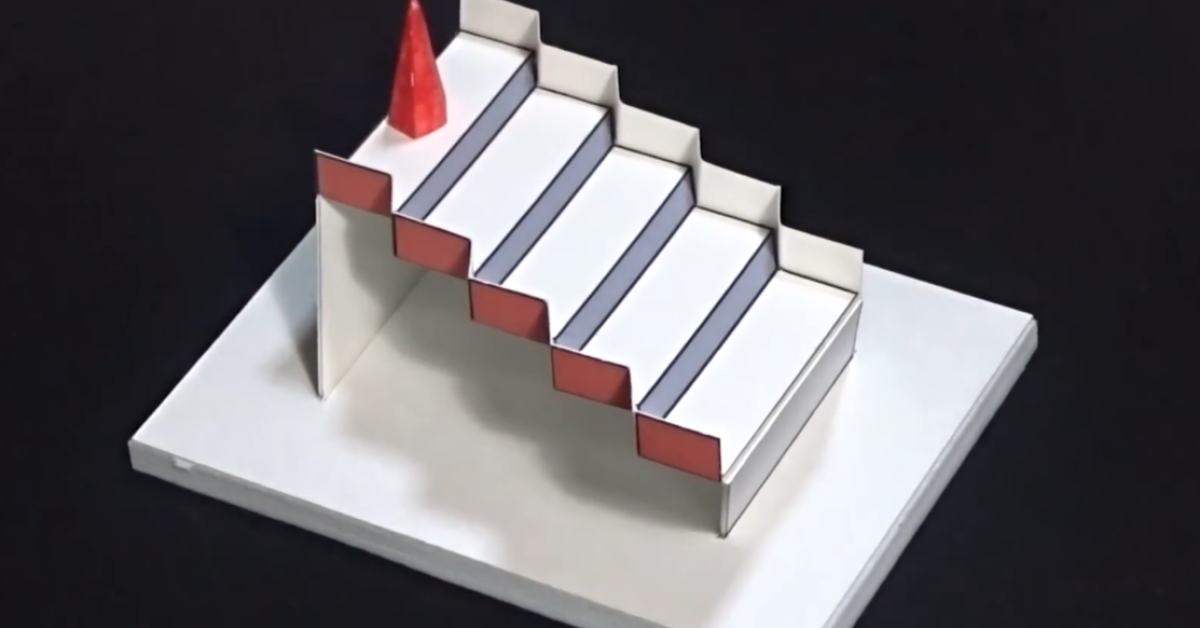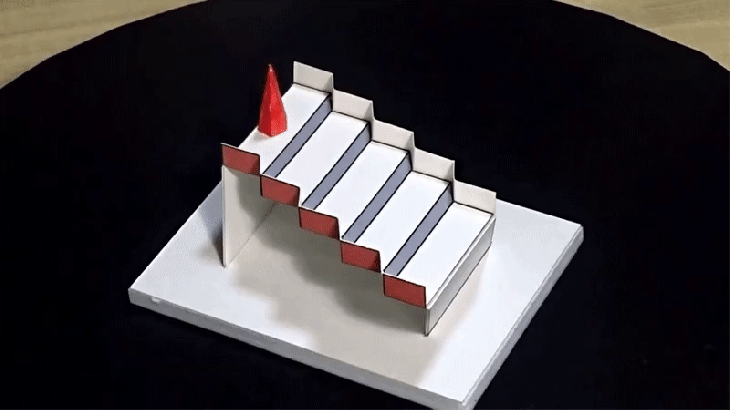These Prize-Winning Illusions Of 2020 Will Numb Your Brain
Dhir Acharya - Dec 29, 2020

This post includes four best illusions that won the Best Illusion of the Year Contest of 2020. Look at them and tell us what your brain sees.
- Japan Hydrogen Breakthrough: Scientists Crack the Clean Energy Code with Mind-Blowing 1,000% Efficiency Jump
- 'Five-second rule' For Food Dropped On The Floor: Is It True?
- Scientists Want To Send 6.7 Million Samples, Including Sperm, To The Moon
If all the twists and turns in 2020 along with the horrifying COVID-19 pandemic are not enough to numb your brain, you still have this Best Illusion of the Year Contest to try out and see if your brain can handle some more challenges.
Each year, a group of visual scientists, neurologists, artists, and ophthalmologists create and judge to pick out the best mind-benders of the year. The winner this year is mathematician Kokichi Sugihara with a 2D staircase illusion made 3D which will make you repeat in your head: “Impossible.”

3D Schröder Staircase
Not all of you know the Schröder’s stairs illusion, but it’s essentially a two-dimensional illustration of zig-zag lines creating what looks like a staircase that descends from left to right or an upside-down staircase, depending on how your brain processes the illustration. Sugihara was able to recreate a 3D model of this illusion, which is a staircase that seems to always descend from left to right even when you spin it 180 degrees around.
The Real Thing??
This illusion is created to explore how the brain perceives the surrounding world and how it produces templates to make image processing faster that sometimes results in misinterpretations. It makes your brain think a frame put in place is a mirror that reflects a pop can placed in the foreground. However, the mirror turns out to be just a window looking at the other can while the brain still believes it is looking at the reflection of the can on the front: this is an illusion that hasn’t been understood completely.
Impossible grid typography
This illusion is an art form confined to two-dimensional representations that illustrate perpetual motion. In the new illusion created by Daniël Maarleveld, he adds three-dimensional animations that make his typography even more difficult for the brain to comprehend. The letters’ shapes appear to be flexible and rigid, and concave surfaces turn convex when they rotate. And the spinning direction of each character is determined by what part you are looking at.
Landloping ladybugs: Frame-induced position shift
When a moving reference point is added to an illustration, the way our brain perceives the position of an object can change. In the first animation, there are two ladybugs aligned vertically. But since they are revealed individually inside a frame that’s moving side to side, the top ladybug looks like it’s shifted to the right and the other one looks shifted to the left.
In the second animation, there are four ladybugs at the same position facing four different directions, but when the moving frame is added, the whole illustration looks like a single bug is moving around an oval track.
>>> University Gives Students Mirrors To Prevent Cheating During Online Exams
Featured Stories

Features - Jul 01, 2025
What Are The Fastest Passenger Vehicles Ever Created?

Features - Jun 25, 2025
Japan Hydrogen Breakthrough: Scientists Crack the Clean Energy Code with...

ICT News - Jun 25, 2025
AI Intimidation Tactics: CEOs Turn Flawed Technology Into Employee Fear Machine

Review - Jun 25, 2025
Windows 11 Problems: Is Microsoft's "Best" OS Actually Getting Worse?

Features - Jun 22, 2025
Telegram Founder Pavel Durov Plans to Split $14 Billion Fortune Among 106 Children

ICT News - Jun 22, 2025
Neuralink Telepathy Chip Enables Quadriplegic Rob Greiner to Control Games with...

Features - Jun 21, 2025
This Over $100 Bottle Has Nothing But Fresh Air Inside

Features - Jun 18, 2025
Best Mobile VPN Apps for Gaming 2025: Complete Guide

Features - Jun 18, 2025
A Math Formula Tells Us How Long Everything Will Live

Features - Jun 16, 2025
Comments
Sort by Newest | Popular